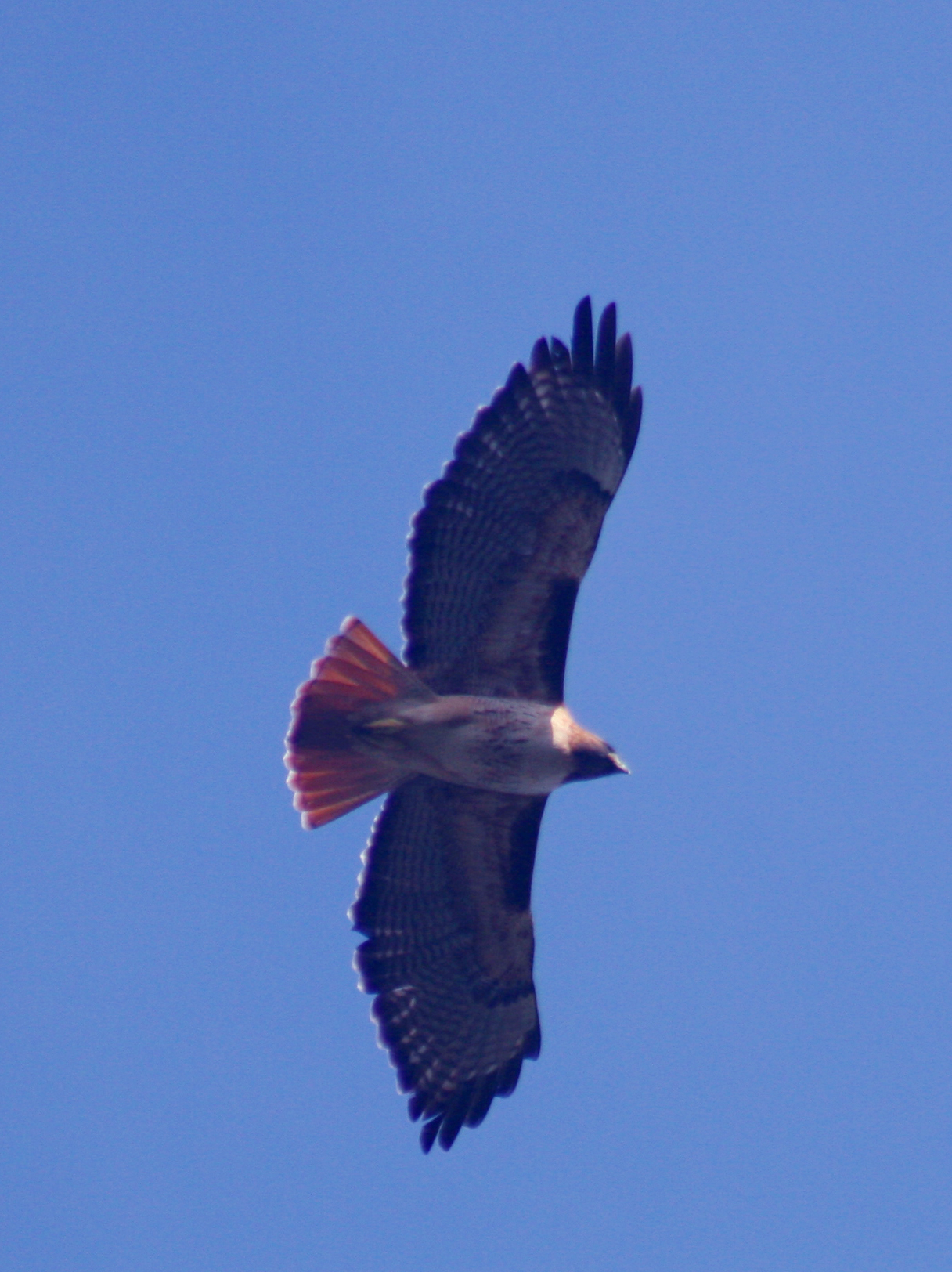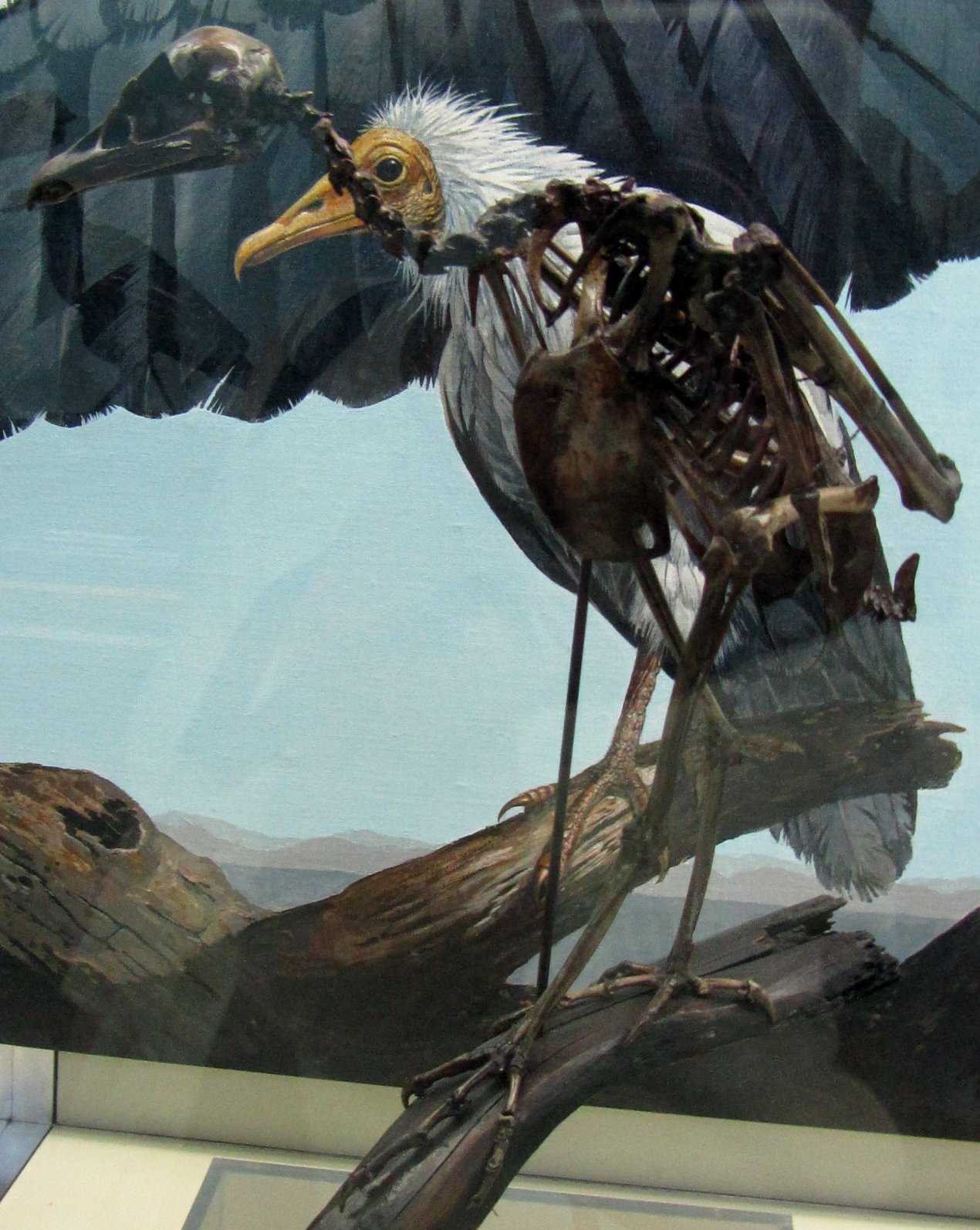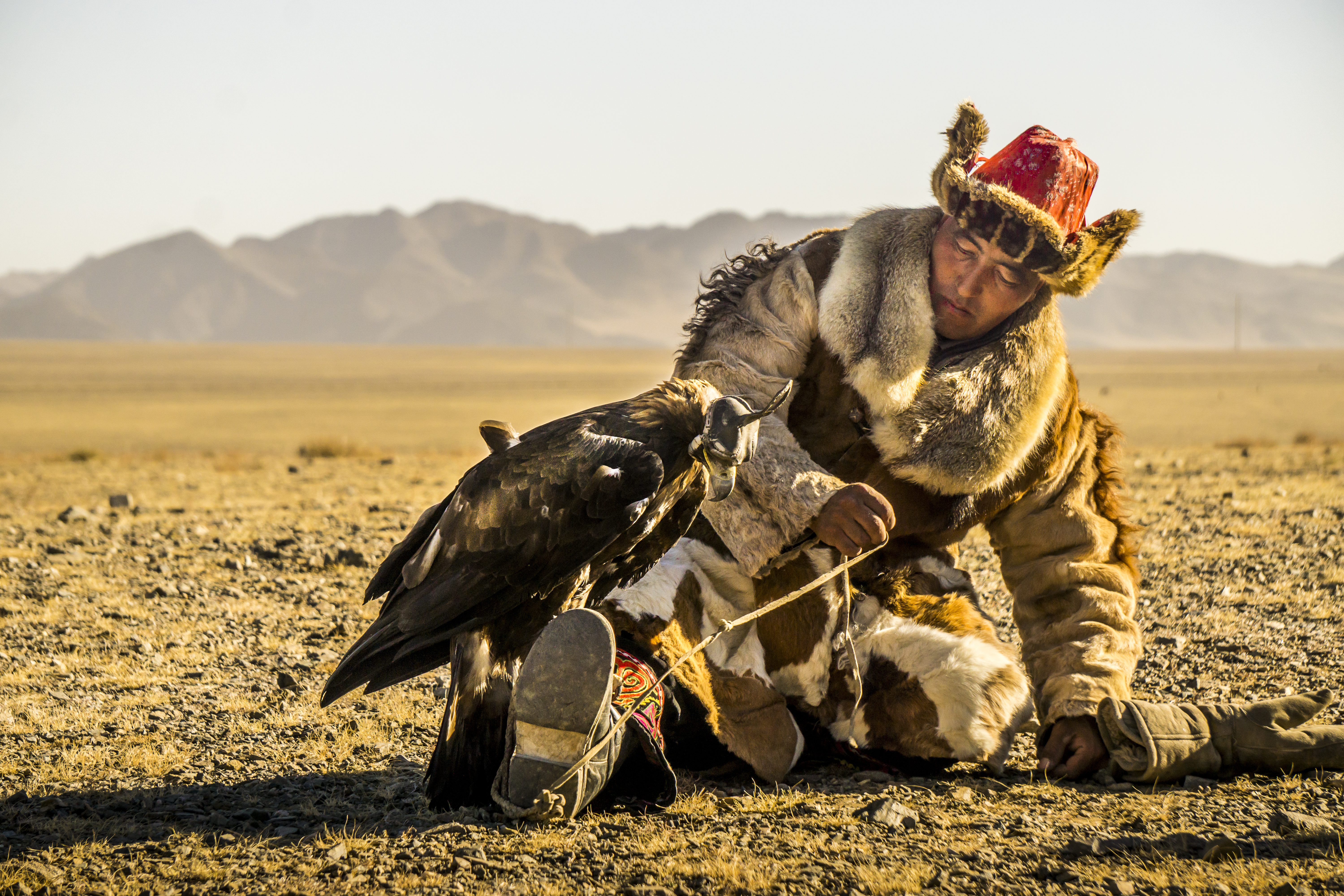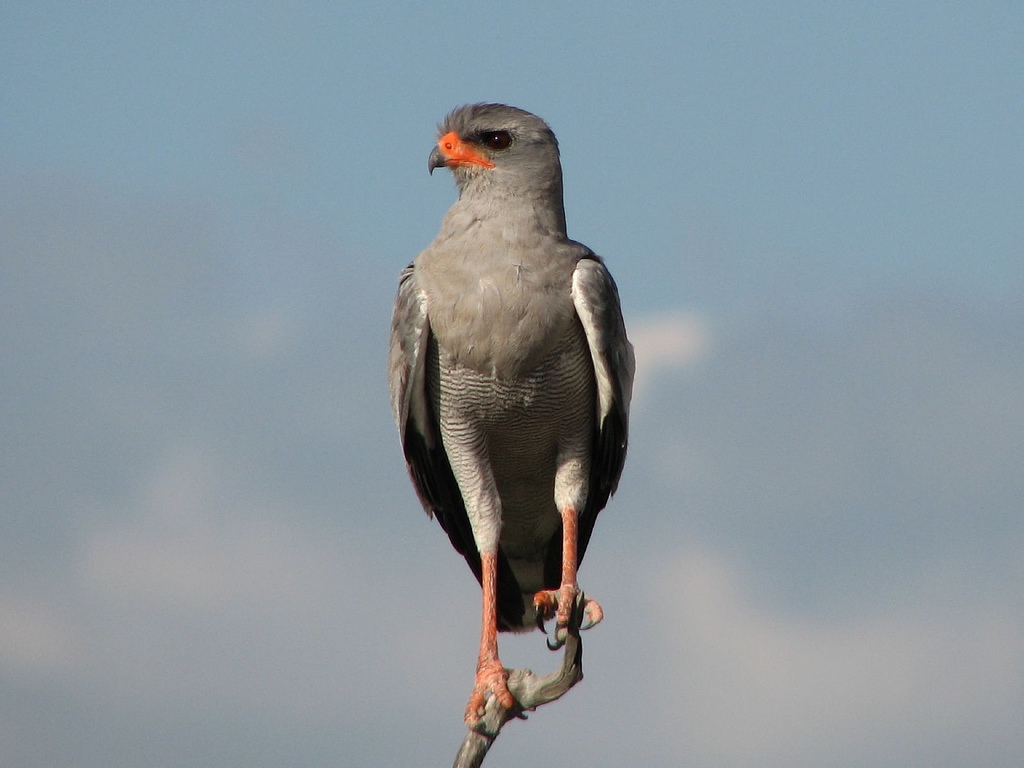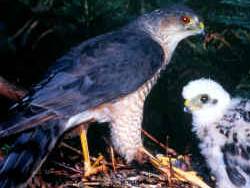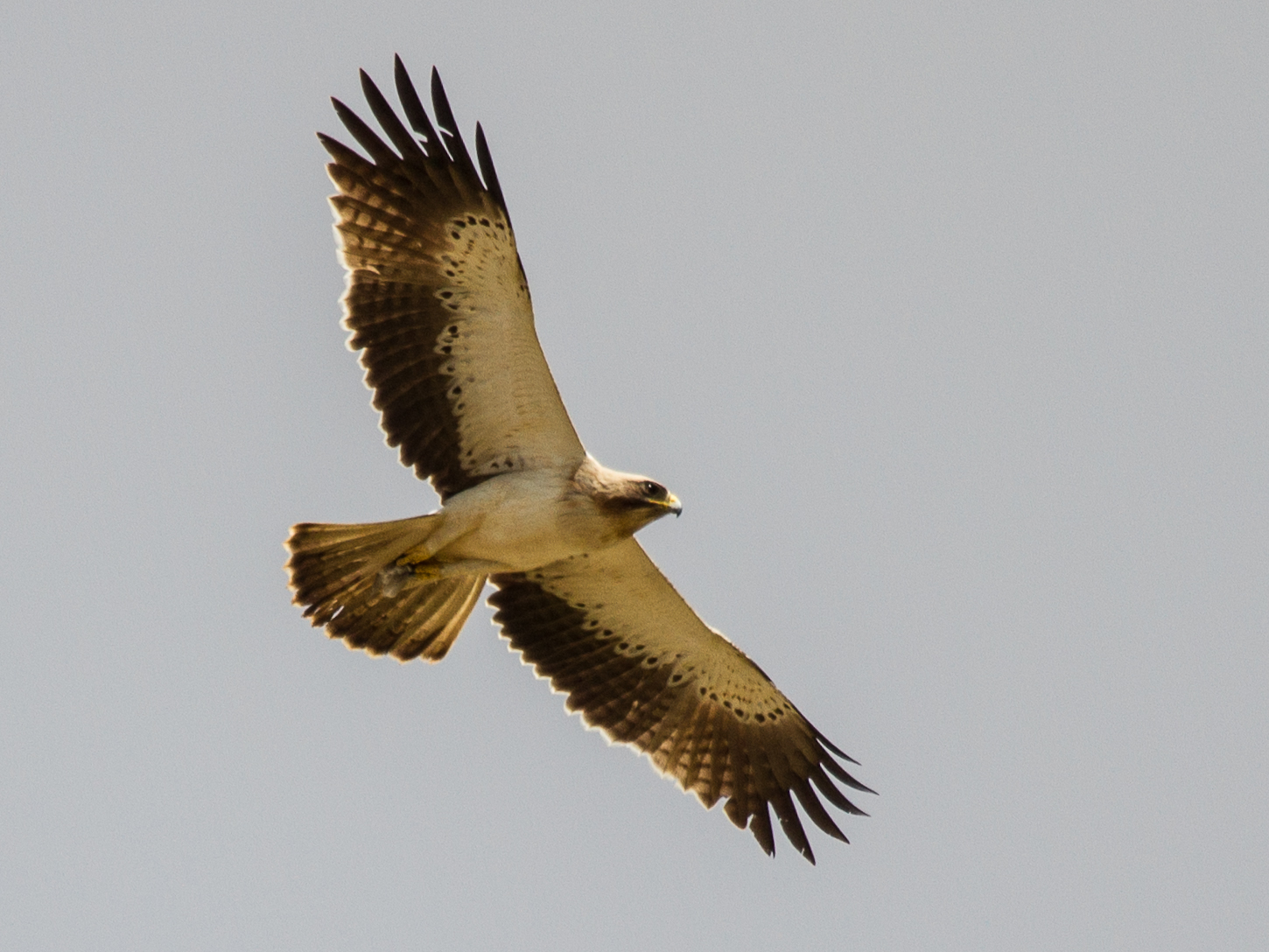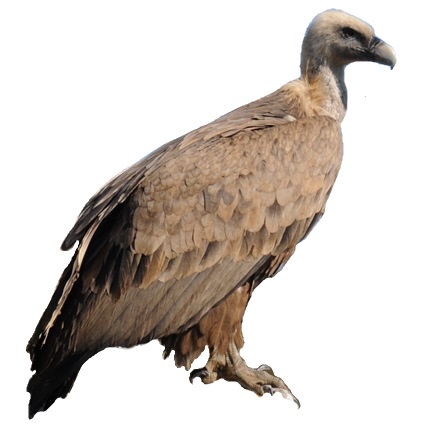|
Hawks
Hawks are bird of prey, birds of prey of the family Accipitridae. They are very widely distributed and are found on all continents, except Antarctica. The subfamily Accipitrinae includes goshawks, sparrowhawks, sharp-shinned hawks, and others. This subfamily are mainly woodland birds with short broad wings, long tails, and high visual acuity. They hunt by dashing suddenly from a concealed perch. In America, members of the ''Buteo'' group are also called hawks, though birds of this group are called buzzards in other parts of the world. Generally, buteos have broad wings and sturdy builds. They are relatively larger-winged and shorter-tailed than accipiters, and fly further distances in open areas. Buteos descend or pounce on their prey rather than engaging in fast, horizontal pursuit. The terms ''accipitrine hawk'' and ''buteonine hawk'' are used to distinguish between the types in regions where ''hawk'' applies to both. The term ''"true hawk"'' is sometimes used for the acc ... [...More Info...] [...Related Items...] OR: [Wikipedia] [Google] [Baidu] |
Red-tailed Hawk
The red-tailed hawk (''Buteo jamaicensis'') is a bird of prey that breeds throughout most of North America, from the interior of Alaska and northern Canada to as far south as Panama and the West Indies. It is one of the most common members of the genus ''Buteo''. The red-tailed hawk is one of three species colloquially known in the United States as the "Chickenhawk (bird), chickenhawk", though it rarely preys on standard-sized chickens. Red-tailed hawks can acclimate to all the biomes within their range, occurring on the edges of non-ideal habitats such as dense forests and sandy deserts.Preston, C. R. (2000). ''Red-tailed Hawk''. Stackpole Books. The red-tailed hawk occupies a wide range of habitats and altitudes, including deserts, grasslands, coniferous and deciduous forests, Agricultural land, agricultural fields, and Urbanization, urban areas. Its latitudinal limits fall around the tree line in the subarctic and it is absent from the high Arctic. It favors varied habitats ... [...More Info...] [...Related Items...] OR: [Wikipedia] [Google] [Baidu] |
Eurasian Goshawk
The Eurasian goshawk (; ''Astur gentilis'', formerly ''Accipiter gentilis'') is a species of medium-large bird of prey in the Family (biology), family Accipitridae, a family which also includes other extant diurnal raptors, such as eagles, buzzards and harrier (bird), harriers. It was formerly placed in the genus ''Accipiter''. It is a widespread species that inhabits many of the temperate parts of Eurasia. Except in a small portion of southern Asia, it is the only species of "goshawk" in its range and it is thus often referred to, both officially and unofficially, as simply goshawk. It is mainly resident bird, resident, but birds from colder regions bird migration, migrate south for the winter. As of 2023, goshawks found in North America are no longer considered be conspecific, but are now designated as the American goshawk (''Astur atricapillus''). Taxonomy The Eurasian goshawk was Species description, formally described in 1758 by the Swedish naturalist Carl Linnaeus in the 10 ... [...More Info...] [...Related Items...] OR: [Wikipedia] [Google] [Baidu] |
Accipitrid
The Accipitridae () is one of the four family (biology), families within the order (biology), order Accipitriformes, and is a family of small to large Bird of prey, birds of prey with strongly hooked bills and variable morphology based on diet. They feed on a range of prey items from insects to medium-sized mammals, with a number feeding on carrion and a few feeding on fruit. The Accipitridae have a cosmopolitan distribution, being found on all the world's continents (except Antarctica) and a number of oceanic island groups. Some species are bird migration, migratory. The family contains 256 species which are divided into 12 subfamilies and 75 genus, genera. Many well-known birds such as hawks, eagles, kite (bird), kites, harrier (bird), harriers and Old World vultures are included in this group. The osprey is usually placed in a separate family (Pandionidae), as is the secretary bird (Sagittariidae), and the New World vultures are also usually now regarded as a separate family or ... [...More Info...] [...Related Items...] OR: [Wikipedia] [Google] [Baidu] |
Accipitridae
The Accipitridae () is one of the four families within the order Accipitriformes, and is a family of small to large birds of prey with strongly hooked bills and variable morphology based on diet. They feed on a range of prey items from insects to medium-sized mammals, with a number feeding on carrion and a few feeding on fruit. The Accipitridae have a cosmopolitan distribution, being found on all the world's continents (except Antarctica) and a number of oceanic island groups. Some species are migratory. The family contains 256 species which are divided into 12 subfamilies and 75 genera. Many well-known birds such as hawks, eagles, kites, harriers and Old World vultures are included in this group. The osprey is usually placed in a separate family ( Pandionidae), as is the secretary bird ( Sagittariidae), and the New World vultures are also usually now regarded as a separate family or order. Karyotype data indicate the accipitrids analysed are indeed a distinct monophyletic ... [...More Info...] [...Related Items...] OR: [Wikipedia] [Google] [Baidu] |
Falconry
Falconry is the hunting of wild animals in their natural state and habitat by means of a trained bird of prey. Small animals are hunted; squirrels and rabbits often fall prey to these birds. Two traditional terms are used to describe a person involved in falconry: a "falconer" flies a falcon; an "austringer" (Old French origin) keeps Eurasian goshawks and uses hawk, accipiters for hunting. In modern falconry, the red-tailed hawk (''Buteo jamaicensis''), Harris's hawk (''Parabuteo unicinctus''), and the peregrine falcon (''Falco perigrinus'') are some of the more commonly used birds of prey. The practice of hunting with a conditioned falconry bird is also called "hawking" or "gamehawking", although the words wikt:hawking, hawking and peddler, hawker have become used so much to refer to petty traveling traders, that the terms "falconer" and "falconry" now apply to most use of trained birds of prey to catch game. However, many contemporary practitioners still use these words in the ... [...More Info...] [...Related Items...] OR: [Wikipedia] [Google] [Baidu] |
Accipitrinae
The Accipitrinae are the Family (biology), subfamily of the Accipitridae often known as the "true" hawks. The subfamily contains 73 species that are divided into 11 genera. It includes the genus ''Accipiter'' which formerly included many more species. The large genus was found to be non-monophyletic and was split into several new or resurrected genera. The birds in this subfamily are primarily woodland birds that hunt by sudden dashes from a concealed perch, with long tails, broad wings and high visual acuity facilitating this lifestyle. Hawks, including the accipitrines, are believed to have vision several times sharper than humans, in part because of the great number of photoreceptor cells in their retinas (up to 1,000,000 per square mm, against 200,000 for humans), a very high number of Neuron, nerves connecting the receptors to the brain, and an indented Fovea centralis, fovea, which magnifies the central portion of the visual field. Eagles, such as the Bald Eagle in the fami ... [...More Info...] [...Related Items...] OR: [Wikipedia] [Google] [Baidu] |
Fish Hawk
The osprey (; ''Pandion haliaetus''), historically known as sea hawk, river hawk, and fish hawk, is a diurnal, fish-eating bird of prey with a cosmopolitan range. It is a large raptor, reaching more than in length and a wingspan of . It is brown on the upperparts and predominantly greyish on the head and underparts. The osprey tolerates a wide variety of habitats, nesting in any location near a body of water providing an adequate food supply. It is found on all continents except Antarctica, although in South America it occurs only as a non-breeding migrant. As its other common names suggest, the osprey's diet consists almost exclusively of fish. It possesses specialised physical characteristics and unique behaviour in hunting its prey. Because of its unique characteristics it is classified in its own taxonomic genus, ''Pandion'', and family, Pandionidae. Taxonomy The osprey was described in 1758 by the Swedish naturalist Carl Linnaeus under the name ''Falco haliaetus' ... [...More Info...] [...Related Items...] OR: [Wikipedia] [Google] [Baidu] |
Sharp-shinned Hawk
The sharp-shinned hawk (''Accipiter striatus'') or northern sharp-shinned hawk, commonly known as a sharpie, is a small hawk, with males being the smallest hawks in the United States and Canada, but with the species averaging larger than some Neotropical species, such as the tiny hawk. The taxonomy is far from resolved, with some authorities considering the southern taxa to represent three separate species: white-breasted hawk (''A. chionogaster''), plain-breasted hawk (''A. ventralis''), and rufous-thighed hawk (''A. erythronemius''). The American Ornithological Society and some other checklists keep all four species conspecific. Taxonomy The sharp-shinned hawk is sometimes separated into four species, with the northern group (''see distribution'') retaining both the scientific name and the common name: sharp-shinned hawk (''A. striatus''). In addition to the nominate taxon (''A. s. striatus''), it includes the subspecies ''perobscurus'', ''velox'', ''suttoni'', ''madrensis' ... [...More Info...] [...Related Items...] OR: [Wikipedia] [Google] [Baidu] |
Buteo
''Buteo'' is a genus of medium to fairly large, wide-ranging raptors with a robust body and broad wings. In the Old World, members of this genus are called " buzzards", but "hawk" is used in the New World (Etymology: ''Buteo'' is the Latin name of the common buzzard). As both terms are ambiguous, buteo is sometimes used instead, for example, by the Peregrine Fund. Characteristics Buteos are fairly large birds. Total length can vary from and wingspan can range from . The lightest known species is the roadside hawk, at an average of although the lesser known white-rumped and Ridgway's hawks are similarly small in average wingspan around , and average length around in standard measurements. The largest species in length and wingspan is the upland buzzard, which averages around in length and in wingspan. The upland is rivaled in weight and outsized in foot measurements and bill size by the ferruginous hawk. In both of these largest buteos, adults typically weigh over , ... [...More Info...] [...Related Items...] OR: [Wikipedia] [Google] [Baidu] |
Eagle
Eagle is the common name for the golden eagle, bald eagle, and other birds of prey in the family of the Accipitridae. Eagles belong to several groups of Genus, genera, some of which are closely related. True eagles comprise the genus ''Aquila (bird), Aquila''. Most of the 68 species of eagles are from Eurasia and Africa. Outside this area, just 14 species can be found—two in North America, nine in Central and South America, and three in Australia. Eagles are not a natural group but denote essentially any kind of bird of prey large enough to hunt sizeable (about 50 cm long or more overall) vertebrates. Etymology The word "eagle" is borrowed into English from and , both derived ultimately from ("eagle"). It is cognate with terms such as , and . It is broadly synonymous with the less common English term "erne" or "earn", deriving from , from , in which it acts as the usual word for the bird. The Old English term is turn derived from and is cognate with other synonymous ... [...More Info...] [...Related Items...] OR: [Wikipedia] [Google] [Baidu] |
Bird Of Prey
Birds of prey or predatory birds, also known as (although not the same as) raptors, are hypercarnivorous bird species that actively predation, hunt and feed on other vertebrates (mainly mammals, reptiles and smaller birds). In addition to speed and strength, these predators have bird vision, keen eyesight for detecting prey from a distance or during flight, strong feet with sharp talon (anatomy), talons for grasping or killing prey, and powerful, curved beaks for tearing off flesh. Although predatory birds primarily hunt live prey, many species (such as fish eagles, vultures and condors) also scavenge and eat carrion. Although the term "bird of prey" could theoretically be taken to include all birds that actively hunt and eat other animals, ornithologists typically use the narrower definition followed in this page, excluding many piscivorous predators such as storks, Crane (bird), cranes, herons, gulls, skuas, penguins, and kingfishers, as well as many primarily insectivorous bir ... [...More Info...] [...Related Items...] OR: [Wikipedia] [Google] [Baidu] |
